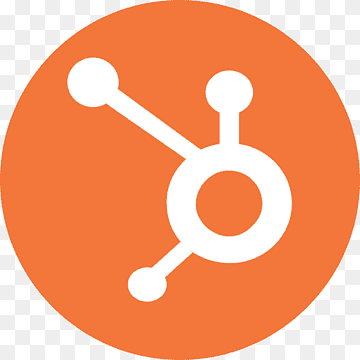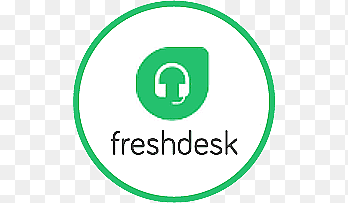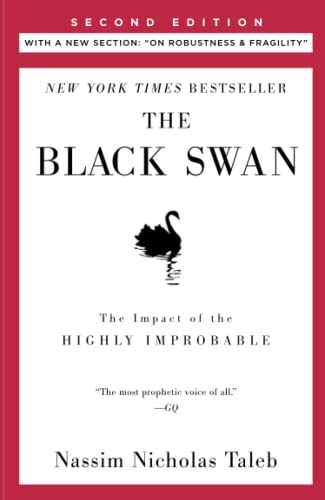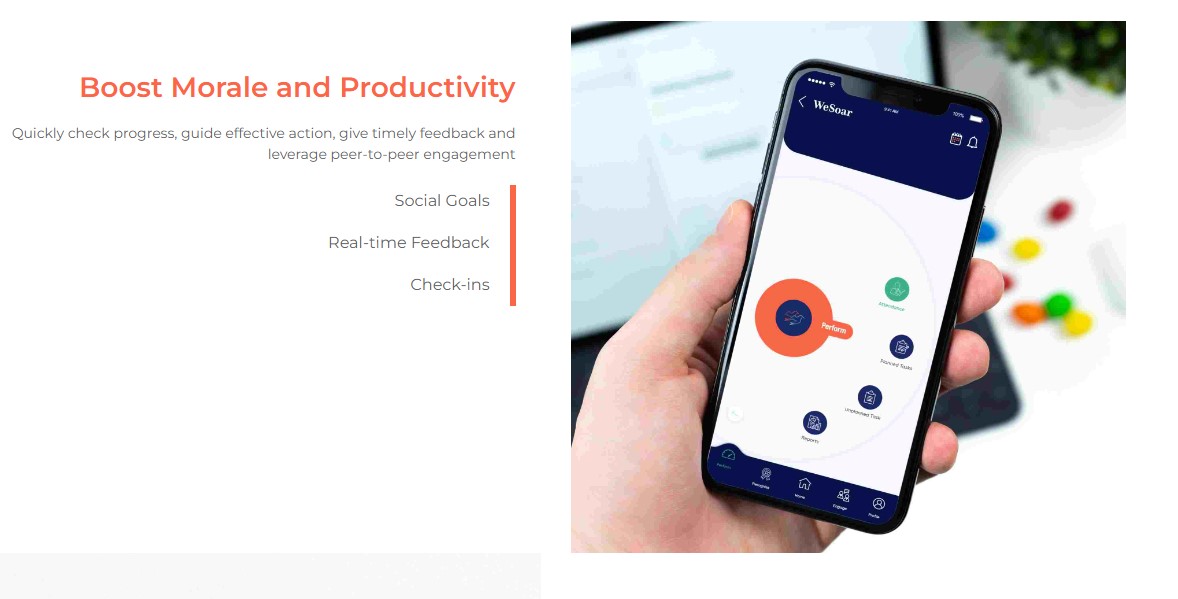Follow: YouTube | Apple | Spotify | Google
A business with a $1K subscription MRR, $10M valuation, and $100M ARR vision. Nisheeth Pathak, the CEO, and co-founder of WeSoar, an AI employee engagement SaaS product. He’s been able to recruit senior advisors, open doors to fortune 500 enterprise partners, and secure $200K funding at an impressive $10M valuation with only a $1k subscription MRR and very lean development cost.
Do you also want to learn how he did it? Stay connected with us because we have everything lined up that you can learn from him to establish a huge business and impact the industry standards.
What are the customer’s pains you hope to solve with WeSoar, and how did you discover these problems?
A lot of it came from listening, and I think that’s one thing that I would strongly recommend anyone who’s going to try to solve a pain point to do, is to listen more and talk less.
We spoke a lot with the end users of different personas, identified what it is that they are looking for, what is stopping them from reaching their peak potential, and one kind of insight after another led to this realization that there is a lot to be still done when we talk about the way people work.
In most organizations, they succeed in spite of HR processes, not necessarily because of them. The processes are completely devoid of connection to their day-to-day workflows.
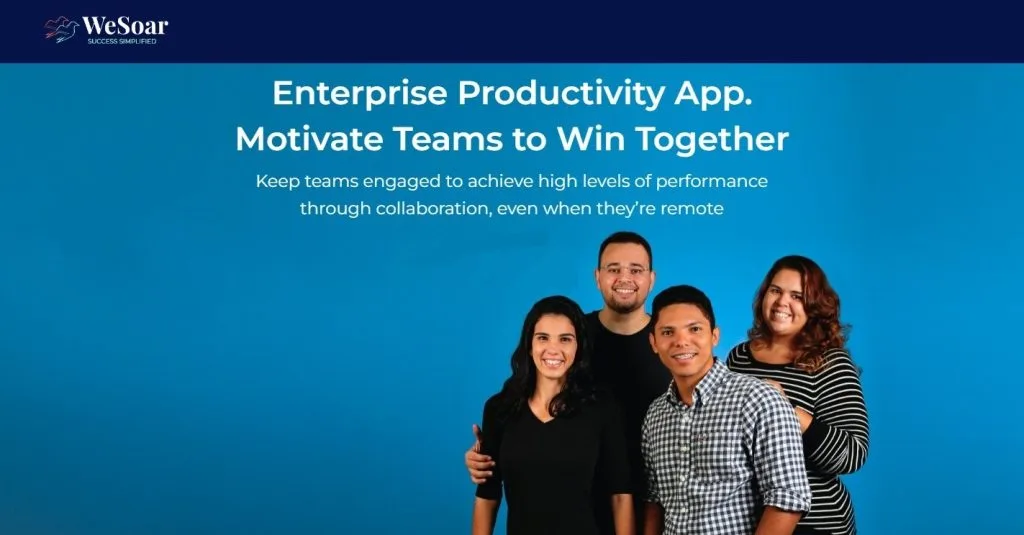
How is your product different vs alternatives?
When it comes to performance management, most managers do not manage their teams according to the HR cycle of set goals once a year, doing a midterm after six months, and then coming back and doing a final assessment at the end of the year. Most managers manage their teams on an ongoing real-time basis.
And that’s why they see this extra step that HR asked them to do as something of a redundancy and something that is a non-value add because that’s not the way anyone leads their team. There’s a very clear disconnect between the way the work is being done versus the way the HR process has been configured.
That’s one example where managers think that there is no value or there is no additional value they get from filling out the forms that HR asked them to do. The value is for HR because they’re completing a process from a compliance point of view, and it’s documented, but from a manager and employee point of view, it’s not necessarily adding a lot of extra value.
The second thing is employee engagement. When organizations do these surveys, they ask their managers to create action plans. Templates get circulated, or an online tool is given to the managers to create an action plan, and there’s constant pressure that the organization and HR put on the managers to complete the action plan.
It’s not enough to create an action plan. You’ve actually got to take action to show results. That’s again, a second area where we found out that there is a broken link between what we ask people to do and what the desired end results should be.
What is your product approach to enforcing an HR action plan?
What we are working with is a relatively new concept called the nudge. It comes from the Nudge Theory, which was basically a Nobel prize-winning framework in economics. It’s been around for a few decades.
It’s been used successfully by governments, and it’s been used by marketing departments to change consumer behavior, but in HR, changing employee behavior is still a relatively new thing, and it’s not being fully utilized.
We want to move away from action planning into more like a nudge framework so that people get nudged on what to do.
How are you automating those nudges?
The additional thing is productization, and that happens through AI. Initially, what we do is basically the supervised nudges, which follow an IF/THEN kind of condition. It’s not very intelligent initially because it has to follow some logical architecture rather than an artificially intelligent architecture.
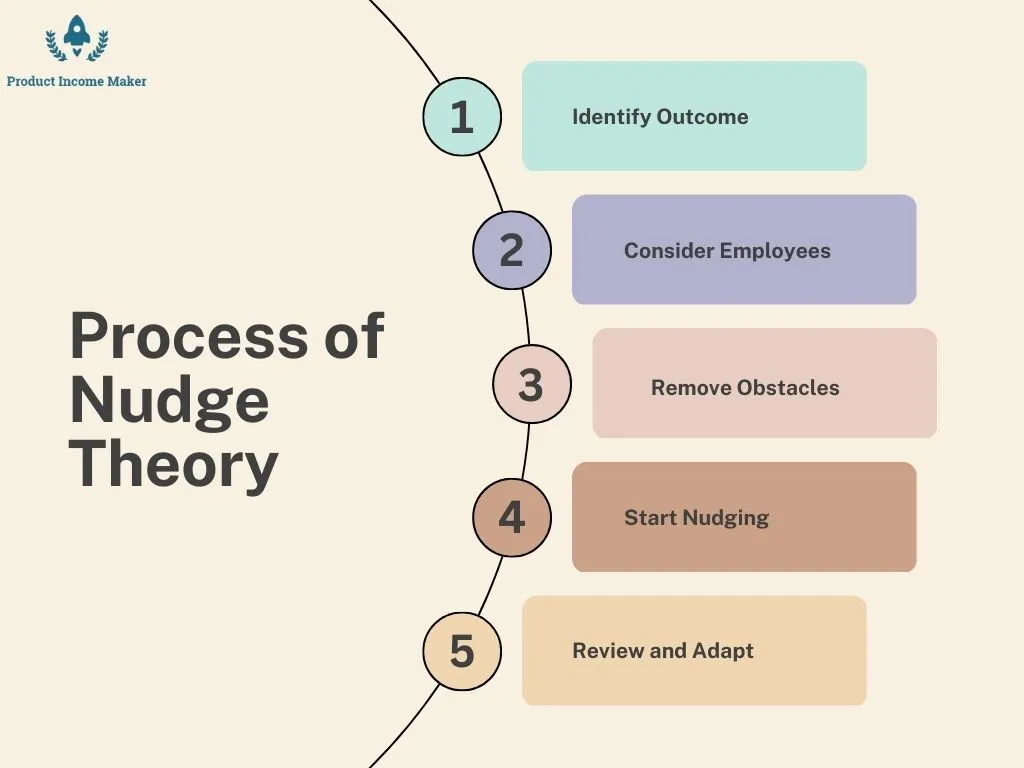
But once we get enough data and a machine learning cycle that kicks in, we get into unsupervised nudges, where AI understands what type of nudge to send at what point in time, understanding the preferences of different people.
These preferences include things like what time of the day is the best time to receive a nudge. If I start my day super busy at 9:00 AM, and if I get a nudge at 9:30, I’m going to dismiss it because I’ve got other things to do.
To get into personalization, to understand when is the best time for you to receive this nudge, what’s the best frequency for you to receive this nudge. I may say, give me a nudge every week, and you may say I want something every three days, and those could be things that could be configured or personalized through AI.
How is the product different than the traditional consultation approach?
One way is using AI to personalize so that there’s no one-size-fits-all approach. The second way is to make it intelligent using machine learning so that the quality of the nudge also improves over a period of time, which is very different from the old world where a consultant used to stand in front of a group of people in a conference room and help them do it one time. Then they would be wedded to that plan for the next year.
How were you able to recruit those large enterprise partners, and were they responsible for your revenue increase?
Yeah, we just increased our $1K MRR to $10K MRR.
We work on a partnership basis. Some of the partners that we are talking about are consulting firms, which could be established ones, especially in the regions we work with.
There’s a respectable consulting firm called Protiviti, which is quite popular in the middle east and India. We work with them, and they kind of opened doors for us through our partnership. We are working closely with PWC, and on the technology side, we are working with Oracle as part of the starter program. We are trying to see how our innovation can be matched to the Oracle scale.
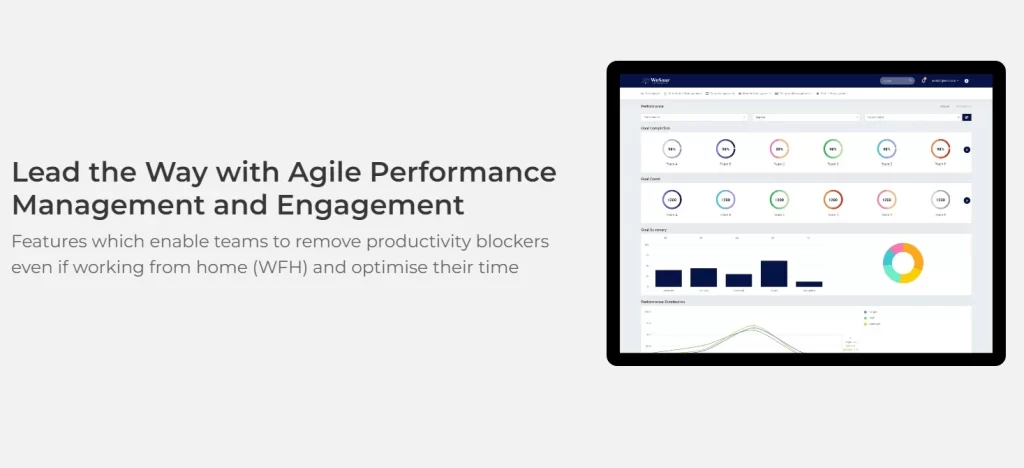
We have also started working informally with SAP, and we are trying to get into a formal agreement with them. But the whole idea that we have is we can’t solve all the problems ourselves. We need to take an alliance and a partnership along with us.
It’s not one superhero. It’s a whole Marvel Cinematic Universe that needs to come along to solve these bigger problems. And we are happy playing, being part of that solution rather than being the solution, the full solution ourselves. And there is a “We” in our name, so we don’t want to do everything and we realized we can’t do everything on our own.
It’s that spirit of collaboration and partnership which is an important thing because I don’t see Oracle and SAP as competition; I see them as collaborators. I see Microsoft as a collaborator. I see Workday as a collaborator.
What was the rationale behind onboarding enterprise partners?
The idea is that when we prove our innovation to these partners and they see value in the innovation, getting scale after that is very easy. SAP, for example, has over a hundred enterprise customers with 100K+ employees, so to get one of those could take a long time through the partnership, but imagine getting a client base of 100K employees using the SMB model.
You’re talking about 1K or 10K companies that you need to have in your client base, the whole kind of complexity of managing that the product sophistication has to go down substantially in order to cater to the SMB segment.
We are going through the partnership route, and our kind of financial model is that if we get about 180 customers in six years, that’s talking about 30 customers in a year from the partnership network with an average headcount of about 10K we are talking about a $100K ARR, $100M ARR.
Each partner would bring in about 60 enterprises over six years. 10 enterprises in a year gradually scaling up, obviously not a straight line, but initially, we start with maybe three customer referrals, gradually ramping it up to about 18 customer referrals or 60 customer referrals over a period of time per year.
We are talking about just 1.5% of the client base of Oracle, SAP, and Workday put together that could bring us a $100M ARR.
What’s the average revenue expected per client?
So our assumption is about 10,000 employees at the outer limit in six years at a $5 per user per month price point. Initially, we are targeting more in the 2000 to 5,000 headcount because we want to ramp up our client base as we become more and more confident in providing them with the seven-star service that we currently do.

So our clients would vouch for our seven-star service, not even five stars, and that’s something we don’t want to compromise on. And we believe that we don’t want to grow too fast so that our service standards fall. So, the plan is we start with 2,000 and gradually ramp up to 10,000, typically at a $5 per user, per month price point.
Are you aiming for an average of half a million dollars annually per enterprise client?
Correct. The first enterprise customer that we are talking about, we have a three-year contract with them, and it’s about $125K annually, going all the way up. If you take a three-year horizon, we are talking about half a million dollars already from our first enterprise customer.
What would be the ballpark cost of acquiring a customer?
In terms of the cost, our budget is around 10% of the contract value, which could be spent on promotions, marketing, channel partner commissions, and so on. But 10% on average is what we are working towards as the client acquisition cost.
It doesn’t include my time, doesn’t include my co-founder’s time, and I understand that’s a significant part of the process, but that’s an early investment that we are making. We don’t have anyone in sales. We have zero salespeople.
So far, we have spent zero on marketing. Everything we’ve got is word of mouth, publicity, walk-ins following referrals, and partner recommendations.
How much time do you expect to return your customer acquisition cost?
One and a half months. And a lot of this mentality to quickly profit from customers comes from my previous experience in banking, where if you were to talk about the companies that I worked in, the management team would track one number, which is net profit. I’m still considering myself new in the whole world of technology and SaaS, and software.
And when I hear people talk about not breaking even for 8 years or 10 years and constantly losing hundreds of millions of dollars, I just don’t get it. In my personal view, we are not running an enterprise or a business to generate losses. We are running a business to generate profits and share them with the people who’ve invested in us.
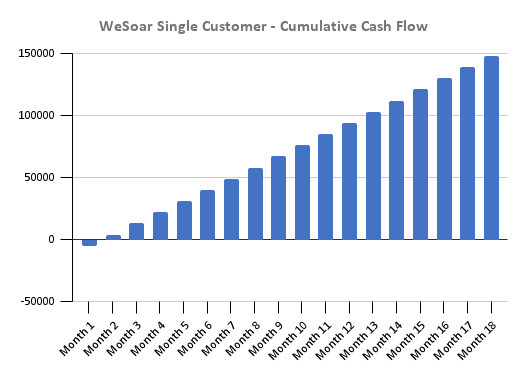
That one-off benefit or one-off windfall that comes when you sell your business or IPO or exit by any other means that’s a long shot. I want the investors to start benefiting much earlier than that.
How were you able to recruit senior advisors?
I think we have an amazing story. The fact that we are trying to solve a very complex problem, which is in one word, “fulfillment,” is something that appeals to a lot of people. And the people we’ve had the fortune of recruiting as our advisory board members or people who work with us in an extended kind of ecosystem are all super-experienced people.
We would never ever have the ability or the affordability to hire them full time, so I think they are bought in into the story that we are trying to create and the problem we are trying to solve.
What made you so appealing for senior advisors to want to open doors for you?
I’ve been persistent, I’ve been stubborn, and I’ve told them that I want them. And I’m prepared to wait it out till they get approvals from their companies in order to make it a normal way of coming as an advisory board rather than just a small side thing.
These are all people who are on the advisory board in an official capacity, having told their organizations that they’re taking up an additional assignment. But I think the one thing that excites people is the story that we have.
How do you hire people and maintain your competitive differentiation of low development costs?
I think it’s a little bit of a mindset. So, when I go recruit people, I don’t look at their CVs. I don’t look at which college they graduated from. And unfortunately, or the way it is, that’s a very common and established way of recruiting in India.
So a lot of companies go to what is called the premier engineering colleges and institutions, which are very difficult to get in. So, admission is very difficult for candidates and students to secure, but once they get into the college, their value increases exponentially, and they become very expensive. So, $100K for a senior engineer coming from one of those colleges is very common. It’s not a big deal.
I don’t look at the name of the college at all. So when I recruit, I don’t even read the CV. I make a conscious attempt not to read the CV. We do a machine test. So, every software developer we hire has to go through a machine test. If they’re successful in that machine test, it tells us that they will be able to do their job.

We are not looking for people who are fluent in English or people who come from a very well-off background. In fact, a lot of people who work with us, and their families, have never owned a car. So we are hiring people who have a fire in the belly, people who come maybe from a disadvantaged background, and people who are not necessarily coming from very high profile colleges or very high profile previous organizations.
So we haven’t hired from Infosys or TCS or any of these companies. We hire people from service companies where typically an engineer works on six to 10 projects in a year, but that gives them that kind of versatility and the breadth of experience that they are able to adapt to the requirements that we have.
We are hiring people for potential; we are hiring people for hunger. We are hiring people for what they can do with assistance and guidance rather than people who’ve already achieved a lot in life and now come with a higher price tag.
What were the biggest challenges throughout your entrepreneurial journey?
There is a challenge every day. You’ve been an entrepreneur, you would know, but a lot of people think that it’s a very cool life that the entrepreneurs lead, and they’re living their dream and chasing greatness and success.
Deep in the trenches, it’s anything but that. So there are challenges that come along every day. You are rejected by VCs, candidates reject you, customers reject you, and you face rejection daily. So, I think one very important thing that I have figured out is you need to have a thick skin and shrug it off and move on.
I’ve had candidates who pulled out at the last minute because they were unfamiliar with our brand name and thought joining a startup was risky. And I told them that Lehman Brothers also failed and were not a startup. So, the risk is a very different thing, but it’s fine. You can’t change everyone’s mind.
And I understand you get a hundred decks a day that you have to review. You don’t have the time to go there. So every VC who passes us is fine. We thank them for whatever few seconds they have spent on us. But I think the biggest challenge and also the opportunity we faced was Covid.
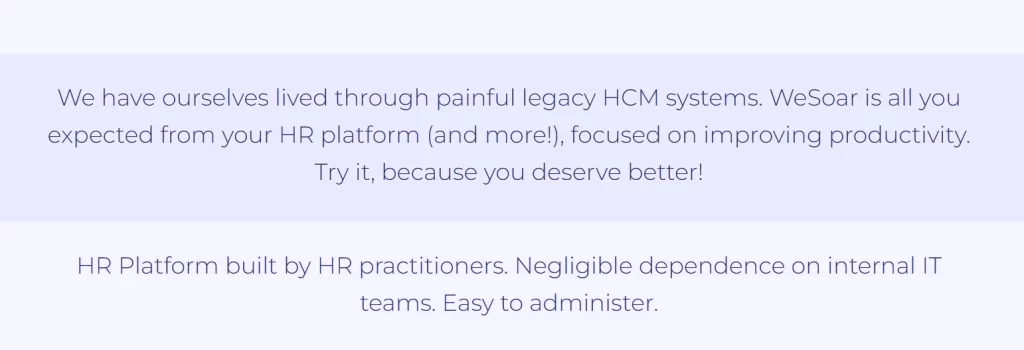
So imagine your business started on the 1st of January, 2020. You made your first offer on the 1st of March, 2020, and in three weeks, you went into a lockdown. And then, we had to recruit and build our team, the first team of 10 people, 10 software developers who had never worked with each other before and all working remotely in a place where infrastructure may not be the best.
What is the mindset that you practice to overcome these challenges?
So I think the most important thing is conviction. Do I believe that we are on the right path? So when I moved into entrepreneurship, I came from the peak of my professional career. I chose to hang in there for a few more years, making a ton of money.
I was working in Dubai, with tax-free salaries in banking. I was a high performer. So obviously, I was earning a lot of money in my corporate career, which helped me save money on the side so that I could sustain the family side and the expenses for three to four years with zero income. And I haven’t taken salaries since August of 2019.
So, I’ve gone three years without salaries, and I’ve been able to do that. If, at any point in time, I was not convinced that this was the right thing for me to do and for my family to go through. I would have dropped the ball and gone back into a job.
It takes time to build a business. My dad says, “You need a thousand days for the tree to feel safe,” and we are getting towards the fag end of the thousand days. And I see hope now; I see the fact that we’ve survived for two years as a good sign. The fact that we are in our third year and starting to get some interest from enterprises is a good sign.
It’s far from over, but at least we see the light at the end of the tunnel. Are we in here for the right reasons? Am I here to sell the company off in two years, make some money, and retire at a beach?
No, I’m here because there is a big problem that I see people face, which I think I can play a small role in alleviating. So, people who work in organizations are not happy, they’re not engaged, and they don’t lead fulfilling lives, so can I make their lives a little bit better?
Can I bring happiness and can I bring success, and can I bring fulfillment into their lives by helping them work in a slightly better way? So those are things that pull you along, and it’s something that is long-term. It is something that requires conviction. You need that belief within you that you’re doing the right thing. That’s the most important part.
How did you convince investors to put money at a $10M valuation with only $1K MRR?
I think people believed me. When I say something with sincerity and with the knowledge that I know how to solve this problem, people believe me. It takes much longer to build an Airbus A-380 than it takes to build a chopper.

The chopper can be off the ground before you realize the A-380 is still under production. It keeps getting built, but when it takes off, it takes off for a long distance. And I think we want to build an Airbus A-380 rather than build a chopper. It takes time for you to gather momentum. You need a longer runway. You need the patience that all the work that has been going on and the plane is still not finished.
No, it’s a bigger plane; it takes time. It’s a bigger problem that we are trying to solve, but when we take off, and I say when we take off because I definitely believe we are on the runway right now. So when we take off, it will make a comfortable and long flight.
What else should aspiring entrepreneurs do to succeed on this journey?
I think the one thing that makes the biggest difference is having a community of similar people in your situation, people you can directly learn from. Those who’ve written books have gone far ahead of you.
Right now, you need the understanding and the empathy and the general understanding that someone can bring in who’s just a little bit ahead of you, who still remembers the pain that you went through six months or one year ago. So that community, I wouldn’t say mentoring or coaching or anything, but just that community of people around.
So, being a founder is a very lonely thing. And I’ll tell you; I had 17 people in my own team in HR in my last job. The broader HR team was about 35 to 40 people. We had a couple of thousand people working in the company; it was a very different thing where you could confide in people, talk to people, get opinions, and all of that.
When you’re a founder, when you’re working in a team of two or three or five or seven, that opportunity isn’t there. So I would think that it makes a lot of sense to reach out to fellow founders through communities and through accelerator programs that you get introduced to and get insights and help from them because those are people who’ve just about managed to clear the hurdles that you are standing at.
Which tools, books, and blogs do you recommend to other entrepreneurs?
There is a book that I liked and it shaped my thinking, and that book is the Black Swan by Nassim Nicholas Taleb. So, The Black Swan event is something that you can benefit from. You don’t actually have to lose from it. So, how you prepare yourself for that Black Swan event is something important.
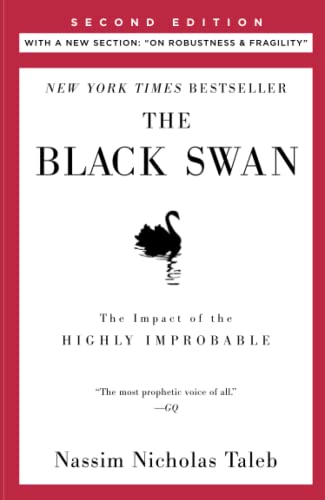
There’s another book that is not technically a recent phenomenon. It’s a few thousand years old, which is the Bhagavad Gita, which is something kind of fountainhead of knowledge and truth in the religion that we follow. And that is a lot of clarity about the purpose of your life; that whole book was written to show the purpose of your life.
I follow a number of people who are management gurus and people who speak a lot of sense. People like Simon Sinek and Adam Grant. Recently, I met a professor from Columbia, Hitendra Wadhwa. So I follow the work that they do, and the things they say make a lot of sense. So comes in bite-sized, you don’t have to worry about reading 200 pages overnight, and that may not be everyone’s preferred way of getting knowledge.
What about tools? Which online tools would you recommend?
As a company, we use two tools primarily, one is for a CRM, and we use HubSpot very easy-to-use, fantastic tool, something that has inspired our own product development because of the clarity and the user experience that it provides.
The second tool we use is Freshdesk, which is FreshWork’s product, very similar to HubSpot, and easy to install. These tools don’t cost a lot, but they help you do your job well.
Are you looking for opportunities such as leads or expanding your partner network further?
Yeah, getting leads is important, but again, we currently want to work with a few sets of companies. We don’t want to work with 200 companies today. Our goal is to work in 2022 and 23 with a maximum of 10 enterprise customers.
The 11th one will be on the waiting list. So it’s important that we decide what we want to work with. In terms of leads, they’re always welcome, and we have this kind of partnership model, the introduction kind of framework that we have with a number of companies where we are happy to share revenue.
So we don’t work on a fixed cost basis, so we don’t work on X dollars per lead model. But we work on a co-sell model where we are able to sell together. We work on a percentage of revenue that is uncapped. We sell a $1M lead; you get X percentage of that $1M. So, we work on a variable cost model, uncapped like a commission program.
What is the ballpark revenue share you’d be willing to offer to partners?
It works from 2% to 10%, depending on the extent of involvement. So if it is just an introduction and nothing else, it is in the 2% range. But if it is co-sell, which is where we are selling it together. So basically, your client, my product, let’s sell together. That goes up to 10%.
Where do you stand on potential acquisitions of complementary products?
Not acquisitions but partnerships. Something that we are always open to is products that are upstream, downstream, and complimentary. We are always willing to get into a partnership with them. So, whether it is an HRMS company that has a strong local or regional presence.
But it doesn’t have a very strong performance module or doesn’t offer engagement surveys. So it’s a good complimentary fit, and there are lots of those. There are lots of smaller HRMS providers which we would be very happy to partner with.
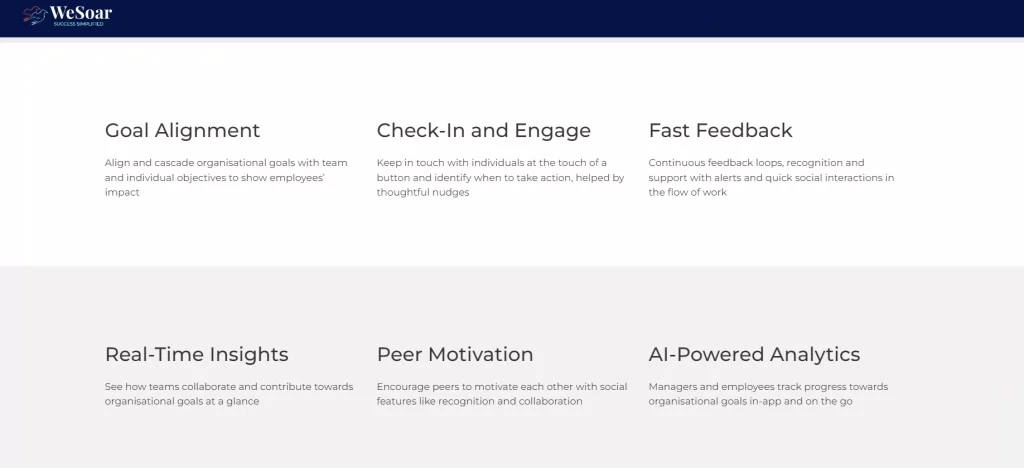
We could also partner with companies that offer specialized solutions like psychometric assessments because that adjacent to our space. Companies that provide coaching because that’s, again, adjacent to our space. So anything that is adjacent or complimentary, we are happy to get into a partnership with them.
In Summary: A nudge and AI recommendation approach to employee engagement. WeSoar secured their first enterprise customer. Now making $10K monthly recurring revenue from one customer and hopefully many more to come through huge partners, such as Oracle and SAP, aiming to make half a million dollars per enterprise customer throughout three years and have the patience to play the long game. Nisheeth, thank you very much for sharing your product income-making story

